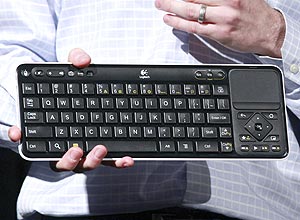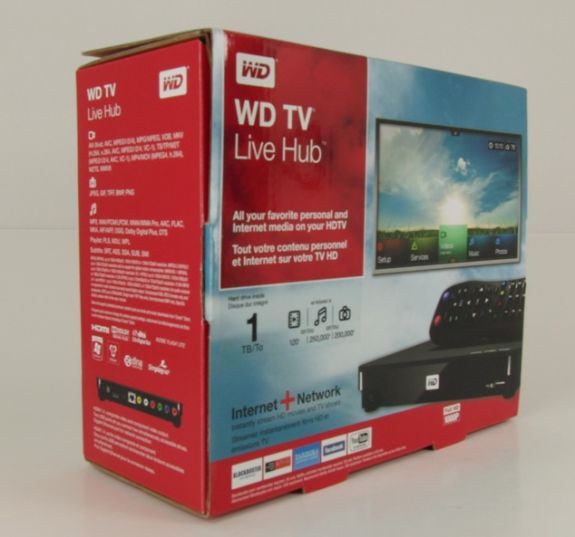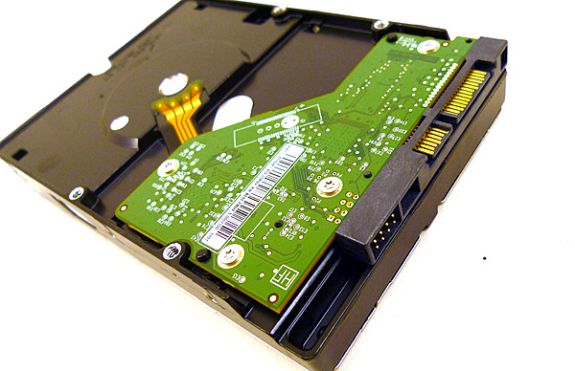Preço é uma barreira para 55% dos usuários; 90% dos entrevistados apontaram problemas com suas conexões.
quarta-feira, 27 de outubro de 2010
Quase 70% dos brasileiros com acesso não usam internet móvel, diz estudo
Preço é uma barreira para 55% dos usuários; 90% dos entrevistados apontaram problemas com suas conexões.
terça-feira, 26 de outubro de 2010
Telefone por satélite criado por brasileiro chega ao mercado nacional
New technology allows copper wire to handle 825Mbps data speeds
URL: http://linuxtoday.com/news_story.php3?ltsn=2010-10-26-021-35-NW-HW-NT
Geek.com: "Thanks to some new technological breakthroughs, however, copper wire may be making a comeback. Current download speeds offered to end users range from 2Mbps-50Mbps, but we are all looking towards 100Mbps as the next milestone."
GVT reduz preços da banda larga
Western Digital WDTV Live Hub Review
URL: http://www.anandtech.com/show/3990/western-digital-wdtv-live-hub-review
Western Digital has become a noted player in the media streamer market over the last two years. Instead of resting on the laurels received for the WDTV, they have continued to introduce new products periodically. Their flagship product lineup started with the WDTV. Introduced in November 2008, it used Sigma Designs 8635. The second generation (2G) product (WDTV Live) added a 100 Mbps wired ethernet port. It used the next generation Sigma chipset, SMP 8655. By then, Netflix became an indispensable requirement for media streamers in the US market. This led WD to introduce the WDTV Live Plus, a 2.5G product which used the Macrovision enabled SMP 8654. Today, Western Digital is introducing their 3G flagship product, the WDTV Live Hub.
We were fortunate enough to gain early access to the WDTV Live Hub (only after it was leaked in Canada by Best Buy, though). WD claims that the 3G product takes all the features from their previous flagship products, and adds a host of attractive features at a price point of just US $199.99. How effective are these new features, and more importantly, are they worth the additional cost? Read on for our review of the WDTV Live Hub.
domingo, 24 de outubro de 2010
SSD 2010 roundup: 15 SSDs compared
Over the last few months, several new SSD controllers have appeared. What do these SandForce, Marvell, SanDisk, JMicron and Toshiba controllers give in comparison to the older Indilinx, Intel and Samsungs?
terça-feira, 19 de outubro de 2010
Western Digital Caviar Green 3TB and My Book Essential 3TB Drives Reviewed
Two months ago I looked at the world’s first 3TB desktop hard drive. It was a 5 platter, 3TB Seagate Barracuda XT inside an external GoFlex Desk chassis. The performance of the drive wasn’t anything out of the ordinary, but the poorly ventilated chassis seemed ill equipped to deal with the thermal load a 5-platter, 7200RPM 3TB drive would throw at it. I wasn’t terribly pleased and I wondered if Western Digital’s external enclosure might be better suited for heat dissipation. WD’s 3.5” external drives fall under the My Book brand and they have visibly more ventilation than the GoFlex Desk I reviewed.
As luck would have it, last week Western Digital announced its own 3TB external drive: the My Book Essential. The Essential suffix somehow implies USB 3.0 support.
Today, Western Digital takes it one step further and announces availability of the internal drive as well. The Caviar Green line is now home to a 2.5TB and a 3.0TB model, priced at $189 and $239 respectively.
Let’s go ahead and review both shall we?
WD Caviar Green 3TB Hard Drive Review
URL: http://hothardware.com/Reviews/Western-Digital-Caviar-Green-3TB-Hard-Drive-Review
While solid state drives get faster, mechanical hard drives get larger. Not long ago, we celebrated the first 1TB hard drive, and since then, welcomed 1.5TB and eventually 2TB drives to the consumer market. Yes, the performance increase that SSD's offer is more than impressive. However, they still can't touch the capacity that traditional hard drives provide tech-savvy, budget conscious consumers and system builders. When it comes to cost per gigabyte analysis, hard drives possess a huge advantage over SSD's.
Intel investirá até US$ 8 bi em fábricas nos Estados Unidos
A Intel afirmou nesta terça-feira que planeja investir entre US$ 6 bilhões e US$ 8 bilhões em fábricas de alta tecnologia nos Estados norte-americanos do Arizona e Oregon.A maior fabricante mundial de microprocessadores afirmou que tem objetivo de construir uma nova fábrica no Oregon e aperfeiçoar diversas unidades existentes.Atualmente cerca de 75% da fabricação de chips da Intel é feita nos Estados Unidos, ao passo em que a maior parte de suas vendas ocorre no exterior.Leia mais (19/10/2010 - 15h56)
domingo, 17 de outubro de 2010
"Futurólogo" prevê que geladeiras serão conectadas à internet
O jornalista americano Nick Bilton é descrito pela mídia de seu país como "futurólogo" ou "evangelizador digital". Isso porque ele é um especialista em novas mídias e está conectado à internet como ninguém, informa Tereza Novaes, editora-adjunta da Ilustrada da Folha.Bilton lançou seu primeiro livro nos Estados Unidos, cuja tradução é "Eu Vivo no Futuro e Aqui Está Como Ele Funciona". Para ele, em breve, as geladeiras serão conectadas à internet.A editora também conta abaixo os motivos pelos quais o jornalista é considerado tão polêmico em seu país. Ouça.Leia mais (16/10/2010 - 05h14)
sábado, 16 de outubro de 2010
País exportou US$ 3,6 bi em aparelhos tecnológicos em 2009. - G1.com.br
veja.com | País exportou US$ 3,6 bi em aparelhos tecnológicos em 2009. G1.com.br Um relatório divulgado pela Organização das Nações Unidas (ONU) na quinta-feira (14) sugere que o Brasil importa muitos produtos tecnológicos para atender a demanda nacional, mas o volume das exportações nacionais do setor ainda é mínimo. ... Brasil na liderança dos pacotes de dados mais caros Custo da internet móvel no Brasil é um dos mais caros entre países ... Brasil importou US$ 20 bi em bens tecnológicos em 2009 |
quinta-feira, 14 de outubro de 2010
Pesquisadores criam carro autônomo que busca passageiros
Cientistas alemães revelaram o mais recente avanço na tecnologia de automóveis que se dirigem sozinhos --um veículo autônomo chamado MadeInGermany (MIG) que os passageiros podem convocar por telefone para uma carona.O cientista da computação Raul Rojas e sua equipe na Universidade Livre de Berlim (FU) desenvolveram o carro experimental, que esperam venha a revolucionar o futuro do automóvel.
| Odd Andersen -13.out.10/AFP | ||
 | ||
| Carro criado por cientistas alemães é autônomo e busca passageiros por meio de acionamento via iPhone ou iPad |
domingo, 10 de outubro de 2010
Google cria carro que anda sozinho - Band
 Midiacon | Google cria carro que anda sozinho Band Um veículo que dispensa a presença do motorista. Essa é a mais nova invenção do Google, que está testando carros que usam um software de inteligência artificial para dirigir, reproduzindo, assim, decisões humanas e percebendo a proximidade com objetos. ... Google testa carros robotizados na Califórnia Google cria carro que dispensa motorista Google está a desenvolver carros que conduzem sozinhos |
sexta-feira, 8 de outubro de 2010
Logitech revela primeiro decodificador para o Google TV
A Logitech International exibiu na quarta-feira (6) um decodificador de US$ 300 para o serviço Google TV, a ser lançado em breve, o que permite um primeiro vislumbre quanto à forma que terá o produto de TV que a gigante de buscas lançará na temporada de festas.O Revue, que custará US$ 299,99, está sendo alardeado como forma de assistir tanto a programas de TV quanto conteúdo de web --o Google já fechou acordo com empresas como a HBO, da Time Warner, e a News Corp.-- em um televisor que a Sony, do Japão, produzirá e venderá.
| Brendan McDermid -6.out.10/Reuters |
 |
| Logitech International exibiu na quarta-feira (6) um decodificador de US$ 300 para o serviço Google TV |
quarta-feira, 6 de outubro de 2010
Presidente da AMD diz que empresa não está à venda
A AMD não está à venda, entretanto, a fabricante de microchips vai ouvir propostas que considere interessantes, afirmou o presidente-executivo da companhia quando perguntado sobre o recente interesse da Oracle pelo setor."A AMD não está à venda, mas ficaremos felizes em ouvir qualquer proposta no interesse de nossos acionistas", disse o presidente-executivo, Dirk Meyer, em conferência da indústria em Barcelona, nesta quarta-feira (6).Larry Ellison, o presidente-executivo da Oracle, afirmou no mês passado que sua empresa tem interesse em fazer mais aquisições para ampliar sua tecnologia e uma companhia de microprocessadores poderia ser uma boa escolha.Leia mais (06/10/2010 - 15h50)
Intel Bundles Acronis Imaging Software with SSDs
URL: http://www.storagereview.com/intel_bundles_acronis_imaging_software_ssds
 Intel and Acronis have announced a deal where Intel SSD owners can have access to drive cloning tools for free. The Intel Data Migration Software, as it is called, guides users through the generally simple process of cloning an old drive to a new Intel SSD.
Intel and Acronis have announced a deal where Intel SSD owners can have access to drive cloning tools for free. The Intel Data Migration Software, as it is called, guides users through the generally simple process of cloning an old drive to a new Intel SSD.
Samsung exibe rede WiMAX2 que alcança velocidade de 330 Mbps
terça-feira, 5 de outubro de 2010
Google anuncia novos parceiros de conteúdo para o Google TV
Say Bye to BIOS and Hello to PCs that Boot in Seconds With UEFI
Microsoft will unleash the PC's latest trick on the world next year, according to reports



